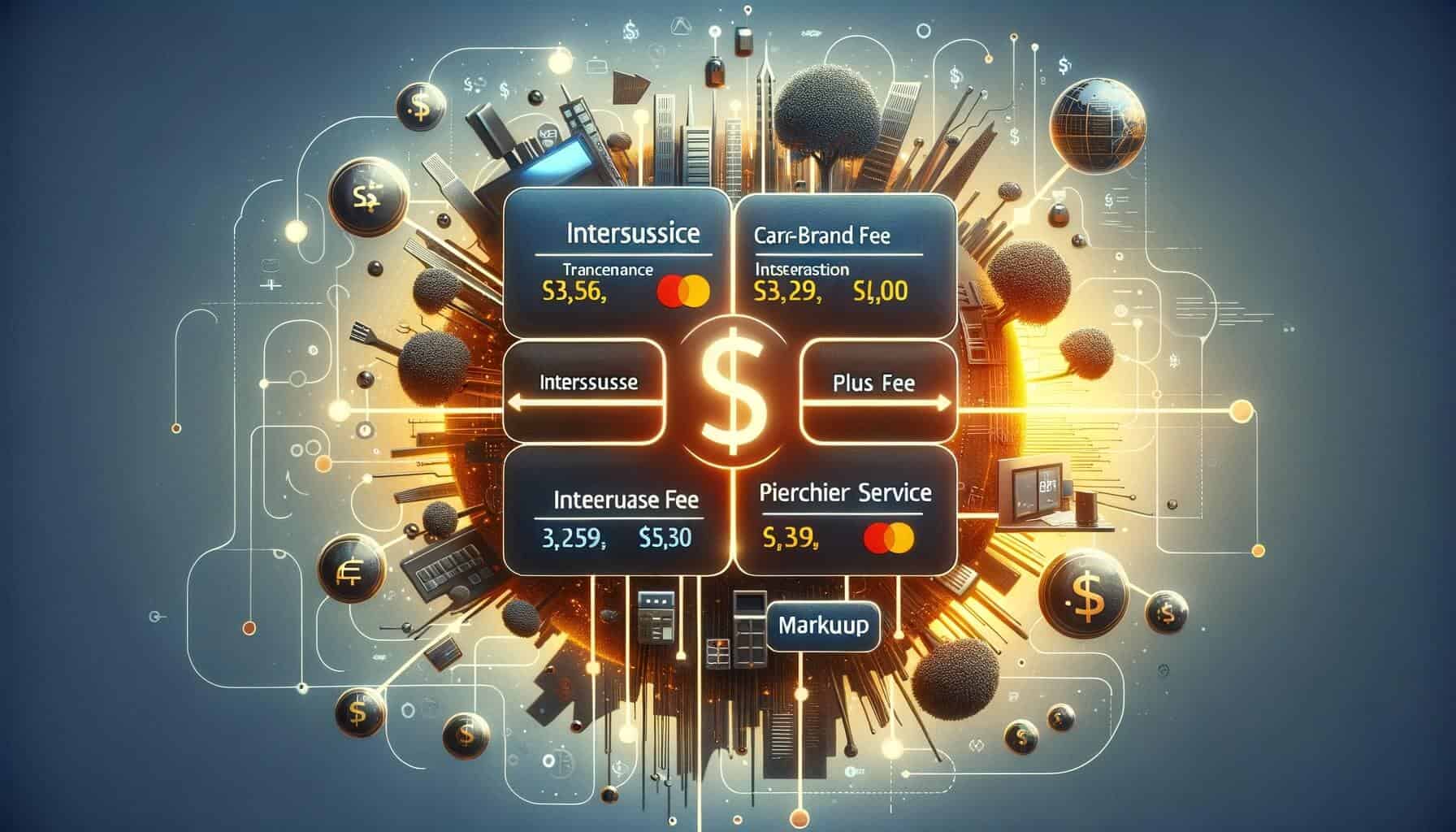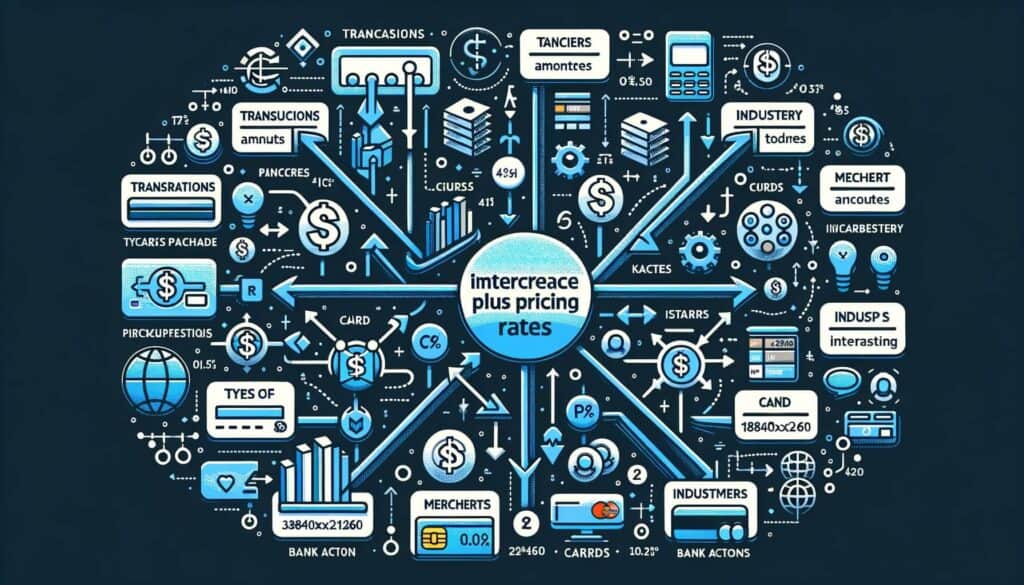
By Amanda Hoglund January 11, 2025
In the world of merchant services, businesses have various options when it comes to pricing models. One such model that has gained popularity in recent years is interchange plus pricing. This pricing structure offers transparency and flexibility to merchants, allowing them to better understand and manage their payment processing costs.
In this article, we will delve into the intricacies of interchange-plus pricing, exploring its basics, benefits, and how it works. We will also compare it with other pricing models, address common misconceptions, and answer frequently asked questions to provide a comprehensive understanding of interchange plus pricing.
Understanding the Basics of Interchange Plus Pricing

Interchange plus pricing is a transparent pricing model that separates the interchange fees set by card networks from the markup charged by payment processors. Interchange fees are the fees paid by merchants to card networks such as Visa, Mastercard, and American Express for processing credit and debit card transactions. These fees are non-negotiable and are determined based on various factors, including the type of card used, the transaction volume, and the industry of the merchant.
In an interchange-plus pricing model, the interchange fees are passed through to the merchant at cost, without any additional markup. The payment processor then adds a separate markup, usually expressed as a percentage of the transaction value or a flat fee per transaction. This markup covers the payment processor’s services, including transaction processing, customer support, and fraud prevention.
Benefits of Interchange Plus Pricing for Merchants

Interchange plus pricing offers several benefits to merchants, making it an attractive option for businesses of all sizes. One of the primary advantages is transparency. With interchange-plus pricing, merchants have a clear understanding of the interchange fees and the markup charged by the payment processor. This transparency allows businesses to accurately calculate their payment processing costs and make informed decisions about their pricing strategies.
Additionally, interchange plus pricing provides flexibility. Since the interchange fees are passed through at cost, merchants can benefit from any future reductions in interchange rates. This means that as the card networks adjust their fees, businesses on interchange-plus pricing will automatically enjoy the savings without having to negotiate new rates with their payment processor.
Furthermore, interchange plus pricing promotes competition among payment processors. Since the interchange fees are standardized across the industry, payment processors differentiate themselves by offering competitive markups. This competition can lead to lower processing costs for merchants, as payment processors strive to attract and retain clients by offering favorable pricing terms.
How Interchange Plus Pricing Works: A Step-by-Step Guide
To better understand how interchange-plus pricing works, let’s walk through a step-by-step guide:
Step 1: Merchant processes a transaction – A customer makes a purchase using a credit or debit card at the merchant’s point-of-sale system or online payment gateway.
Step 2: Interchange fees are determined – The card network, such as Visa or Mastercard, determines the interchange fees based on factors like the type of card used, the transaction volume, and the industry of the merchant.
Step 3: Interchange fees are passed through – The payment processor passes the interchange fees through to the merchant at cost, without any additional markup. This ensures transparency and allows the merchant to see the exact amount charged by the card network.
Step 4: Payment processor adds a markup – The payment processor adds a separate markup to cover their services. This markup is usually expressed as a percentage of the transaction value or a flat fee per transaction.
Step 5: Merchant pays the total amount – The merchant pays the total amount, which includes the interchange fees and the payment processor’s markup. This amount is deducted from the merchant’s account and transferred to the payment processor.
Factors Affecting Interchange Plus Pricing Rates

Several factors can influence the interchange plus pricing rates charged by payment processors. Understanding these factors can help merchants negotiate favorable terms and optimize their payment processing costs. Some of the key factors affecting interchange-plus pricing rates include:
1. Transaction volume – Merchants with higher transaction volumes often have more negotiating power and can secure lower interchange-plus pricing rates.
2. Average transaction value – The average value of transactions processed by a merchant can impact the interchange plus pricing rates. Higher average transaction values may result in lower rates.
3. Industry type – Different industries have varying levels of risk associated with them. Payment processors may adjust their markups based on the perceived risk of the merchant’s industry.
4. Card types accepted – Certain card types, such as premium or rewards cards, may have higher interchange fees. Merchants accepting these cards may face higher interchange-plus pricing rates.
5. Payment processor’s pricing structure – Each payment processor sets its own markups for interchange plus pricing. Merchants should compare pricing structures from different processors to find the most competitive rates.
Comparing Interchange Plus Pricing with Other Pricing Models

To fully understand the benefits of interchange plus pricing, it is essential to compare it with other pricing models commonly used in merchant services. Two popular alternatives to interchange-plus pricing are flat-rate pricing and tiered pricing.
Flat-rate pricing, as the name suggests, charges a fixed percentage or flat fee per transaction, regardless of the interchange fees. This pricing model offers simplicity and predictability, as merchants know exactly how much they will be charged for each transaction. However, flat-rate pricing may not be cost-effective for businesses with high transaction volumes or those processing large-ticket transactions, as the fixed rate may result in higher overall costs.
Tiered pricing, on the other hand, categorizes transactions into different tiers based on their perceived risk and charges different rates for each tier. While tiered pricing can offer competitive rates for certain transactions, it lacks transparency, as the interchange fees are bundled into the tiers. This makes it difficult for merchants to determine the exact amount they are paying in interchange fees and markup.
In comparison, interchange plus pricing provides transparency and flexibility. Merchants can see the exact interchange fees charged by the card networks and the separate markup added by the payment processor. This transparency allows businesses to accurately calculate their costs and make informed decisions about their pricing strategies. Additionally, interchange-plus pricing offers the potential for cost savings as interchange rates decrease over time.
Common Misconceptions about Interchange Plus Pricing
Despite its benefits, interchange plus pricing is sometimes misunderstood or misrepresented. Let’s address some common misconceptions about interchange-plus pricing:
Misconception 1: Interchange plus pricing is more expensive than other pricing models.
Reality: Interchange plus pricing can be cost-effective for businesses with high transaction volumes or those processing large-ticket transactions. The transparency of interchange-plus pricing allows merchants to negotiate competitive markups and benefit from any future reductions in interchange rates.
Misconception 2: Interchange plus pricing is only suitable for large businesses.
Reality: Interchange plus pricing is suitable for businesses of all sizes. Small businesses can benefit from the transparency and flexibility of interchange-plus pricing, allowing them to accurately calculate their payment processing costs and make informed decisions.
Misconception 3: Interchange plus pricing is too complex to understand.
Reality: While interchange plus pricing may seem complex at first, it offers transparency and clarity once merchants grasp the basics. Payment processors can provide guidance and support to help merchants understand and navigate the pricing structure.
Misconception 4: Interchange plus pricing is only available to certain industries.
Reality: Interchange plus pricing is available to merchants across various industries. While certain industries may have higher interchange fees, the transparency of interchange-plus pricing allows merchants to see the exact amount charged and negotiate competitive markups.
Frequently Asked Questions
Q1. Is interchange plus pricing suitable for businesses with low transaction volumes?
Yes, interchange plus pricing can be suitable for businesses with low transaction volumes. While the benefits may be more pronounced for businesses with higher volumes, the transparency and flexibility of interchange plus pricing can still be advantageous for smaller businesses.
Q2. Can merchants negotiate the markup in interchange plus pricing?
Yes, merchants can negotiate the markup charged by the payment processor in interchange plus pricing. Since the interchange fees are standardized, payment processors differentiate themselves by offering competitive markups. Merchants should compare pricing structures from different processors and negotiate favorable terms.
Q3. How can merchants calculate their payment processing costs with interchange plus pricing?
Merchants can calculate their payment processing costs by adding the interchange fees charged by the card networks to the markup charged by the payment processor. The interchange fees can be obtained from the card network’s fee schedule, while the markup is typically provided by the payment processor.
Q4. Can interchange plus pricing result in cost savings for merchants?
Yes, interchange plus pricing can result in cost savings for merchants. As the card networks adjust their interchange rates, businesses on interchange plus pricing will automatically benefit from any reductions without having to negotiate new rates with their payment processor.
Q5. Are there any downsides to interchange plus pricing?
While interchange plus pricing offers transparency and flexibility, it may require more effort from merchants to understand and manage their payment processing costs. Additionally, some payment processors may have complex pricing structures or hidden fees, so merchants should carefully review the terms and conditions before signing up.
Conclusion
Interchange plus pricing is a transparent and flexible pricing model that separates the interchange fees from the markup charged by payment processors. This pricing structure offers several benefits to merchants, including transparency, flexibility, and potential cost savings.
By understanding the basics of interchange plus pricing, merchants can accurately calculate their payment processing costs and make informed decisions about their pricing strategies. While interchange plus pricing may require some effort to grasp, its transparency and potential for cost savings make it an attractive option for businesses of all sizes.